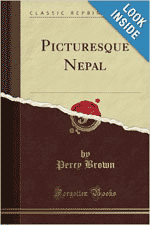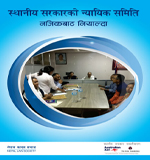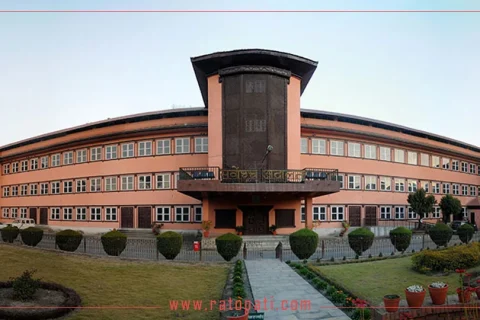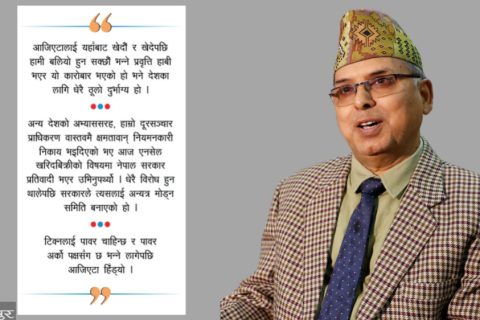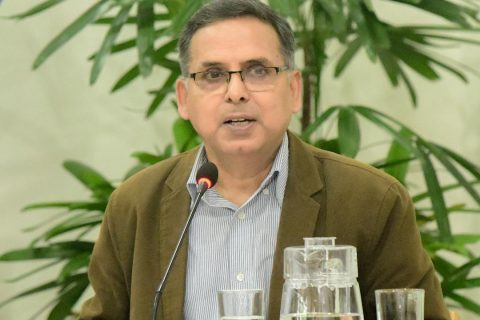
Percy Brown, Picturesque Nepal [London: Adam & Charles Black, 1912]
There are many authors who have worked on Nepal’s aesthetic and cultural heritages. The book of Percy Brown, Picturesque Nepal (London: Adam & Charles Black, 1912) certainly deserves a special mention.
Much alike many other British authors writing on Nepal, Brown too was one of the civil servants of British India. However, he was not just writing a memoir following his visit to Kathmandu. In fact, it was a serious explorative work. Brown followed his interest in art and architecture even in later years. They dealt with India. The two-volume: Indian Architecture, dealing with arts in Buddhist, Hindu and Islamic period in 1940s, and Indian Painting (1918) speak about his commitment aloud. The precision in which Brown has drawn his conclusion on many important aspects on aesthetic and cultural strands of Nepal shows the depth of his understanding in the subject.
In his preface to Picturesque Nepal, Brown explains why he has chosen to write about “the little-known state of Nepal, where the wonderful natural scenery and the creative genius of man have combined to make a powerful appeal to all lovers of the picturesque and of the imaginative in art.” He is disturbed by the fact that the Nepalese heritage is “falling rapidly into decay.” The book is an effort to produce a brief photographic survey so that some of the main features of these arts and architectures are preserved for the posterity. The valley of Nepal being “a veritable art museum of a particularly interesting character,” deserved this attempt.
In his bid to describe Nepal, he has hardly left anything outstanding. He describes the cities in the valley with full fondness. Not just the hills, mountain and the rivers around, but also the monuments like the Bhim Sen’s Tower, the Durbar Square of Bhatgaon, the Golden Gate – Nyatpola Deval or the Temple of the Five Stages, the Taumari Tol, the principal buildings of Patan and Kirtipur, and the Pashpati (the Burning-Ghat) in Kathmandu. His descriptions of the temple of Changu Narayan, its magnificent art and architecture, and the pilgrims’s ritual are splendid. All the major festivals of Nepal are described with their characteristic features. He describes Newari arts, which he finds influenced by artistic heritage of India and China. The Water-Garden of Balaji with the Fishponds and Fountains, and the submerged Narain have also been dealt with. Lamaism has been identified and explained. The Unko Vihar also finds important place in the book.
Percy Brown mentions about the visit of Gautam Buddha to the Nepal Vallley in the fifth century before the birth of Christ as the first incident of importance in its history. It was during the reign of Kiranti King Jitedasti, in which he states, “the Hindu religion, administered by the Brahmans, was the cult of the people.” He also states, based on the mythical sources, that Buddha was able to proselytize more than one thousand Brahman and Kchetrya people to Buddhism during his brief visit. Some of these converts made big names for themselves in later years as the disciples of Buddha. Brown further mentions the encounter that led to the demise of King Jitedasti. He outlines the incident where King Jitedasti “answered the call to arms to fight against the common enemy – the Kauravas” – and was killed in the Mahabharata war after advancing as far as Panipat in the Punjab region.
Percy Brown mentions about the struggle between Brahmanism and Buddhism in Nepal as many others have described when dealing with the history of religion in India. He is not clear what he means by Brahmanism, but in the context that he deals with this issue, it is clear that he means it to be the Hindu religion of the vedic period (1500 bc to 500 bc). During the third century, it is his claim that Buddhism was able to win over Brahmanism. The reason is attributed not to any internal incident, but to the visit of King Ashoka to Nepal, who ruled over the entire Indian empire proclaiming Buddhism as the national religion. Its effect on Nepal was enormous.
This effect that Brown describes with much confidence is the “Brahmo-Buddhism” effect. He observes: “India commenced with Brahmanism and then became Buddhist. It reverted to Brahmanism, and then was forced into Mohammedanism. Nepal began in the same way, being first Brahmanistic, and was subsequently gathered, with India, into the fold of Buddhism. At this point the analogy ceases. India eventually rejected Buddhism, and would have none of it. Nepal compromised, combined the two cults, and in the broad sense Brahmo-Buddhism is the religion of the State to the present day. But the most striking difference between the two countries is that whereas the one was overwhelmed by the great wave of Mohammedanism which swept the peninsula from end to end in the twelfth and following centuries, Nepal was never affected by this great political cataclysm. The storm, raging in the plains of India, was spent before it reached the natural ramparts of Nepal, and only distant echoes of the Islamic turmoil reached the seclusion of the valley.”
The seclusion of Nepal gave both the religions: Buddhism and Brahmanism to flourish here uninterrupted with religious tolerance. In the process, the great Licchavi dynasty came to an end, giving the way to the Thakuris who established themselves in the eleventh century. They ruled the country until towards the middle of the fourteenth century. The installation of what Brown calls Ajodhya dynasty, and the ultimate emergence of the Malla kings, before the Shah dynasty, explained the country’s political history. The subsequent Hindu rulers of Nepal were crucial for this tolerant tradition. Brown mentions that the main temples and monasteries of Nepal not only exist together but are wealthy and well supported. This leads Brown to claim that the country of Nepal of fifteen hundred years ago bore in many respects a striking resemblance to the Nepal of the present day.
Besides the state of Brahmo-Buddhism, Brown highlights another significant façade of Nepal’s religious history. According to him, “Nepal illustrates, as approximately as time and ordinary circumstances permit, the state of India before Islam had imprinted its inedible mark on almost every aspect of its life. The manners and customs of the people, their religion, arts and industries, the towns and the country, are practically the same as they were ten centuries ago. Unaffected by any foreign influences, undisturbed by the transitions which have taken place in the outer world, Nepal, protected by its natural position, presents an ideal picture of the Middle Ages – the Middle Ages of the East.”
Percy Brown explains Newars – the original inhabitants of the valley with much respect and indebtedness. Almost everywhere in the book, where he describes Nepalese art and architecture, Brown flags the aesthetic temperament of Newars with all his appreciation. Making a comparison between the Gurkhas, who conquered the country in 1768, and the urbanized Newars, the locals, he however, states: “For a sound and sympathetic administration and an ideal system of military organization the methods of the latter must be studied, but for the arts and industries, the architecture of the houses and temples, for all that is picturesque and historic in the valley, the present generation is indebted to the Newars.”
A reader is enlightened by every piece of information in the Picturesque Nepal. Brown maintains that Vikramaditya, after whom the Bikram Sambat has been established in Nepal, is to the Hindus what Alfred the Great (849-899), the King of the Anglo-Saxons, is to the English people. He describes pagoda-roofed durbar palace as the most attractive building in Katmandu. However, he thinks its design is a “confused labyrinth of quadrangles, passages, and chambers.” He further mentions the Tantric element of Nepali Buddhism which has linkages with what he calls Sivaism.
Percy Brown is amused by Gurkhas in one important sense. He cannot find why Gurkhas do not have athletic desires other than for ‘shikar.’ “Katmandu boasts a magnificent maidan, which in almost any other part of the world would, on every occasion, be freely utilized for either indigenous or exotic athletics, but it is usually deserted, except during the times of parades.” He thinks like every British that Gurkha excels, but only in – “war, that mad game the world so loves to play.”

